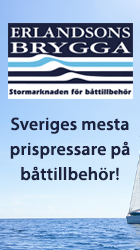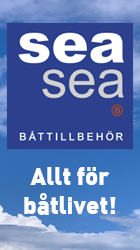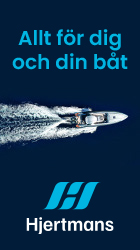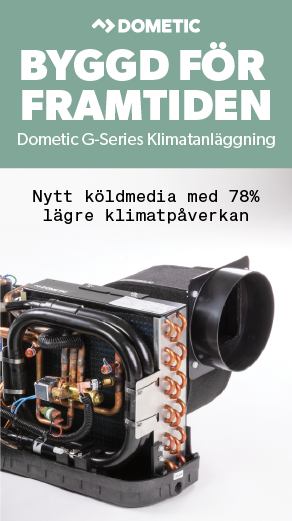Puma med Ken Read som skeppare drar ifrån i Volvo Ocean Race. Den amerikanska båten har ökat ledningen före Ericsson 4 till 24 Nm och gentemot Ericsson 3 till 50 Nm. Det kan vara tillfälligheter som styr båtarnas placering eftersom vägvalet har en stor betydelse. Och med 6 800 Nm av ursprungligen enorma 12 000 Nm kvar till Rio återstår en stor del av spänningen. Nedan finns även en länk till en ny radioinspelning.
Snart får dock någon av de “svenska” båtarna göra något radikalt för att dra ifrån i ledningen. Hela fältet har varit väl samlat de senaste dagarna och båtarnas besättningar bevakar minsta manöver från de andra båtarna.
Det mest spännande nu blir att följa Ericsson 3 kontra resten av flottan. Mange Olsson med sin norska navigatör har gjort ett försök att komma loss.
Här är den senaste pressreleasen från Ericsson Racing Team och förmiddagens pressrelease från Race Office:
ERICSSON RACING TEAM FIRST AND SECOND AT LEG 5 SCORING GATE
STOCKHOLM, Sweden (Mar. 4, 2009) – Ericsson Racing Team’s yachts in the Volvo Ocean Race were first and second past the first scoring gate of Leg 5.
Ericsson 4, skippered by Brazil’s five-time Olympic medalist Torben Grael, collected the maximum 4 points available when it led the fleet across latitude 36 South at 00:21:09 GMT. The overall fleet leader, Ericsson 4 now has 53 total points.
Ericsson 3, led by Swedish skipper Magnus Olsson competing in his sixth circumnavigation race, scored 3.5 points when it followed 32 minutes later. For Ericsson 3 the achievement was deeply satisfying considering the Nordic crew started the leg seven hours late after a two-week layover in Taiwan for repairs.
Not content to rest on their laurel, Ericsson 3 further intrigued race followers with an immediate tack to the north after clearing the scoring line. The bold decision from navigator Aksel Magdahl caused a stir across the fleet, including sistership Ericsson 4.
“That option has been around a lot of the way down here; we discounted it and went for the points,” said Ericsson 4 navigator Jules Salter. “Every weather model is showing different things, but [Ericsson 3’s option] does look like the favored route and looks like it might be the quickest way to Cape Horn, so they are in very good shape. Having said that there might be some other reasons why that might not work and the more traditional strategy of heading south might work better.”
For Ericsson 4, the achievement is a nod to the crew’s consistency. The race to the scoring gate has seen unbelievably close racing among the top three, which included Puma of the U.S. In the past two days each boat has taken a turn in the lead.
“We managed to cross the first scoring gate in first earlier on today so the boys had something to smile about for a second, as the conditions were, to put it nicely, crap,” said Ericsson 4 watch captain Brad Jackson. “It was an extremely wet angle to the mixed up waves, which turned being on deck miserable and below deck we were unable to sleep. But now things have moderated and settled down so we can get back in the rhythm of the days.”
The frequency of the position reports, every three hours, has forced this 10th edition of the Volvo Ocean Race into a boat-for-boat struggle, rather than boat-versus-weather system as has been the case in past races.
“The boat-to-boat tactics which result from the three hourly position reports tends to keep the boats from getting separated,” said team meteorologist Chris Bedford. “No one wants to give up a place in the interest of better routing.”
Although the scoring gate is cleared, more than 7,000 nautical miles remain to the finish in Rio de Janeiro, Brazil. The majority of those miles will be sailed in the strong westerly winds of the Southern Ocean, featuring big waves and the threat of icebergs.
On the course ahead are two ice waypoints that must be left to starboard, the first at 47S between longitude 155 West and 140 West and the second at 45S between longitude 120W and 105W.
After the second ice waypoint the fleet must round Cape Horn, which is the second scoring gate on the leg. From Cape Horn it’s about a 2,200-nautical mile jaunt to the finish in Rio.
“Now the hard part starts,” said Bedford. “They have some very tough days ahead. On the numbers the leg is about half over. But physically, I’d say it’s only about one-third complete.”
VOLVO OCEAN RACE LEG 5 LEADERBOARD
(Mar. 4, 2009, 1302 GMT)
1. Puma, 6,941 nautical miles to the finish
2. Ericsson 4, +15 NM
3. Ericsson 3, +45 NM
4. Green Dragon, +58 NM
5. Telefónica Blue, +63 NM
Bilden:
Brad Jackson ombord i Ericsson 4. Foto: Guy Salter/ Ericsson Racing Team.
Radiofil:
http://hugin.info/135770/R/1295159/294008.mp3
Wednesday 4 March 2009 10:00 GMT
THE TEN ZULU REPORT, LEG 5, DAY 19
By Mark Chisnell
A flat-out, pedal-to-the-metal, and don’t-spare-the-horses drag race finally settled the first points for Leg 5. Ericsson 4 went through the scoring gate at 36 degrees S just after midnight GMT. Torben Grael and his team picked up the four points by a mere 32 minutes of advantage from their sistership – and second-placed Ericsson 3 was only 10 minutes in front of PUMA. The gap back to Telefonica Blue was a little bigger, but still only a couple of hours, with Green Dragon just over another hour behind.
One story-line came to an end overnight, and another started immediately – the big break is finally on – we’re about to see some leverage with a capital L. Showing a remarkable taste for adventure, Ericsson 3 smoked through the scoring gate and tacked to head north-east. I don’t think too many people were expecting that – judging by the phone ringing off the hook at Race HQ this morning – unless, of course, you were checking the Predicted Routes overnight. Veteran skipper, Magnus Olsson has cut loose his young gun navigator, Aksel Magdahl. And Magdahl called them all out – that thing is loaded, and he isn’t afraid to use it.
I’m getting ahead of myself – at 10:00 ZULU this morning, Ericsson 4 was leading PUMA, Telefonica Blue and Green Dragon south on port tack, past the East Cape of New Zealand. The wind was a fresh 20+ knots, blowing from just south of east. Meanwhile, the black sheep of the family, Ericsson 3, was on the opposite tack. She was going slightly north-east, and while she wasn’t sailing in completely the opposite direction to the others, she might as well be … and the previous 24 hours had all been so straight-forward.
Let’s start with a quick recap of some new multimedia that added a little colour to the action in the clouds in yesterday’s report. Telefonica Blue’s Media Crew, Gabriele Olivo recorded a good audio interview with navigator, Tom Addis on whether or not the next band of clouds on his radar really was the arrival of the south-easterly that he was awaiting.
And if you want to see how close the racing was as they clawed their way out of that final cloud belt, then I can recommend both Double Vision and Three’s a crowd. Tom Addis held his hands up yesterday, and said nobody’s fault but mine – today it’s my turn, but again, I’m getting ahead of myself.
The fleet was finally clearing the cloud line when we left them yesterday morning, breaking into the freshening south-easterly breeze. Everyone clicked up through the gears until they had the boats on the red line, with the breeze hitting 30 knots overnight – check out this graph of Boat Speed (BS) to see how it ramped up as everyone focused on getting to the scoring gate. If we look at the Distance to Leader (DTL) chart on the same graph, then you can see that not much changed – the Dragon was struggling a little, but we’ve come to expect that on a reach.
Only once they started to clear the scoring gate, from the 01:00 ZULU Position Report onwards, did the options open up again. Ericsson 3 plunged down the rankings when she tacked away, while PUMA and Green Dragon have chosen to sail a little tighter wind angle (TWA in the Data Centre), and have gone a little slower as a result – but they have got themselves a better DTL.
The spikes in the DTL data are caused by the Race Office changing the Distance to Finish (DTF) calculation. The ice gates present a problem for both the DTF and the Predicted Routing, as the boats can ‘touch’, cross or sail anywhere north of the gate – so what point do we use for the calculation, or point the Predicted Routes at? The DTF is now checking the mileage via both ends of each ice gate, and selecting the shorter option. (And Warren – thanks for answering Camilla French’s question about the ice gates in yesterday’s Comments.)
It’s not going to be about the DTF for a few days though – it’s all about that huge strategic play from Ericsson 3. It’s time for my Mea Culpa moment. Yesterday, we were looking at a Predicted Route image that showed the yachts headed south all the way to the Chatham Islands. I was predicting a race south, rolling anti-clockwise around the centre of the big high pressure system visible on that Predicted Route image.
To reinforce the point, I replied to Keith’s Comments question (about whether or not it was intentional that the scoring gate has ensured the maximum time in the Southern Ocean) by saying that it was the high pressure that they had to go around that was forcing them south, rather than the scoring gate.
Well – as, we can see from Ericsson 3, it turns out that there was a routing option the other side of the high pressure, going clockwise, to the north of the centre. And overnight, the Predicted Route started to select that option. I was wrong and Keith was right – without the scoring gate, they would all have chosen the northern route and would consequently spend a lot less time in the Southern Ocean. As Ken Read said in an email yesterday, they could have cut the corner and saved 400 miles. Oh the weather – can’t live with it, can’t live without it and its unlimited capacity to make us all look stupid.
Nevertheless – only one boat has chosen the northern route, although Rick Deppe reported this morning that PUMA got the same answer from their routing software. And that’s because it has some risks – Race Forecaster, Matt Sanders discussed the option in his latest analysis, saying, “the viability of this route depends heavily on the track of these pressure features and navigators correctly positioning their vessel. A forecast model error or navigator’s misjudgment could mean running into a very strong headwind and short tacking in highly unsettled conditions.”
The pressure features he’s talking about are visible on this morning’s Predicted Route image, which is set up with the weather in 24 hours, and the boat’s just reaching the ice gate in five days time. The low pressure system is centred to the top and middle of the image. While the high pressure is centred south-west of it. In between is the cold front that the fleet had to break through to get into the south-easterly wind (TWD).
I mentioned earlier that it’s tough to know how to set up the Predicted Route because they’re allowed to ‘touch’, pass through or sail north of the ice gates. So where do we point the Predicted Route at – first ice gate, second ice gate, the western end, the eastern end, the middle? At the moment, it’s routing towards the second ice gate and, rather conveniently, this Predicted Route passes through the first ice gate to pick up another, Southern Ocean low pressure system, that’s east-bound in five days time.
As you can see from the Predicted Route image though, it’s going to be a full-on five days. Ericsson 3’s route is Predicted to be quickest, while for the rest of the fleet it now looks like going through the big high pressure is quicker than going south of it. But every weather forecast seems to bring a different answer – as Jules Salter describes in this audio interview. Who would be a Volvo Ocean Race navigator?
On a similar theme from yesterday’s Comments, Bill Tucker was asking if there was any way of telling if the winning option in the Virtual Race, (which apparently is going via Hawaii to starboard) would have worked for the real boats. I don’t know much about the Virtual Race, as I have enough on my plate with the real one, and too many of my friends are headed for the Betty Ford Center when it’s over. But isn’t it a little premature to say the winning option is via Hawaii, when no one is yet at Cape Horn? Or maybe they are? Anyway, the way to tell would be to go back and run a Predicted Route on the weather we actually had for the month, once the leg is over, using the Volvo Open 70’s performance data. Someone out there may work that answer out one day, and if I hear about it, you’ll all be the first to know.
Finally, Paul Juhlin and Dierk Polzin were asking about the animation on the Race Viewer. I must admit I never use the Forward and Back buttons – have you tried changing the Position Reports manually, one at a time? Click on the “down arrow” to the right of the Position Report date and time, in the light grey box. I know this isn’t controlling the speed of the animation, but you can choose any given report this way, which works for me.


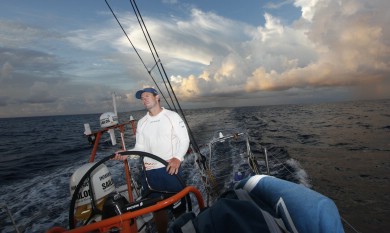

.jpg)



